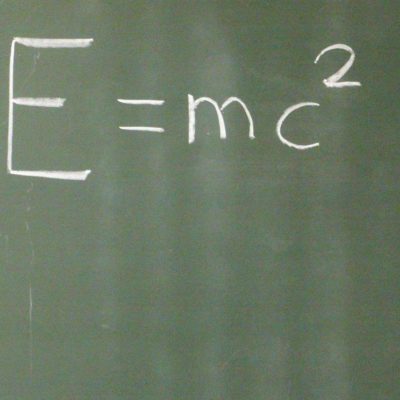Description
We are building the periodic table formed as a kind of harp or dulcimer. The instrument can hang on a wall like a Picture. It is made of aged spruce wood and the front shows the long format of the periodic table. It is depicted in a perspective view as a stack of cubes on a base formed as a parabola. Each element has its own cube. From each element arise two strings, that go down over a wooden bridge to their tuning pins. On the soundboard above the strings have fine tuners. The tones of the two strings are one octave apart. Like a guitar the instrument has a sound hole.
The strings of the instrument are tuned by using the theory of the equivalence of mass m and energy E and expressing this energy with its frequency f. The formulas are depicted on the instrument.
This way it is possible to convert the atomic mass of any element to a frequency of an electromagnetic wave. To make the order of the periodic table audible, we have considered the electromagnetic as tones (acoustic waves). Since the “acoustic frequencies” of the elements are much too high to hear, we have transposed them 72 and 73 octaves down. Then every tone is audible but it sounds terrible. 76 and 75 octaves down is much more agreeable. Then both tones of hydrogen and the deeper one of helium are not audible, but we can generate the beat of them by interference of their overtones. We think that the instrument with its 237 strings (one string more for hydrogen) will be completed in June or July (2020).




